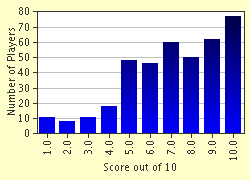Quiz Answer Key and Fun Facts
1. This controversial woman, the wife of a president of Argentina, has become a legend. Adored by many in her country, the subject of books, plays and films, she died of cancer at the age of 33.
2. Which South American country celebrates Jose de San Martin, known as the Liberator and Father of his Country, as its national hero?
3. Simon Bolivar is the national hero of several Latin America countries. What is the Spanish term used to describe him?
4. Which Chilean national hero joined with Jose de San Martin in the crusade to free South American territories from the Spanish?
5. Next to Simon Bolivar, Jose Marti is probably the best known figure in Latin American history. In which country is he celebrated as a national hero?
6. A modern-era hero to many in Latin America, this controversial figure died in Bolivia at the age of 39. He was an important figure in the Cuban revolution led by Fidel Castro. He has become an icon to students and revolutionaries around the world.
7. This Colombian writer won the Nobel Prize for Literature in 1982. He is celebrated throughout the world for his magical works of fiction.
8. This famous statesman was the first indigenous president of Mexico. His birthday, on March 21st, is a national holiday.
9. This Mexican priest is best known for "el grito", his cry for independence. This speech took place on September 16th, 1810, in the small town of Dolores, Guanajuato, an event which is now celebrated as one of Mexico's most important national holidays.
10. No list of heroes would be complete without mentioning the "Mothers of the Plaza de Mayo", the mothers and grandmothers of the many thousands of men and women who disappeared after opposing their country's government. They have marched every Thursday in the Plaza de Mayo since 1976. In which South American capital city do these marches take place?
Source: Author
robbieh
This quiz was reviewed by FunTrivia editor
ing before going online.
Any errors found in FunTrivia content are routinely corrected through our feedback system.

